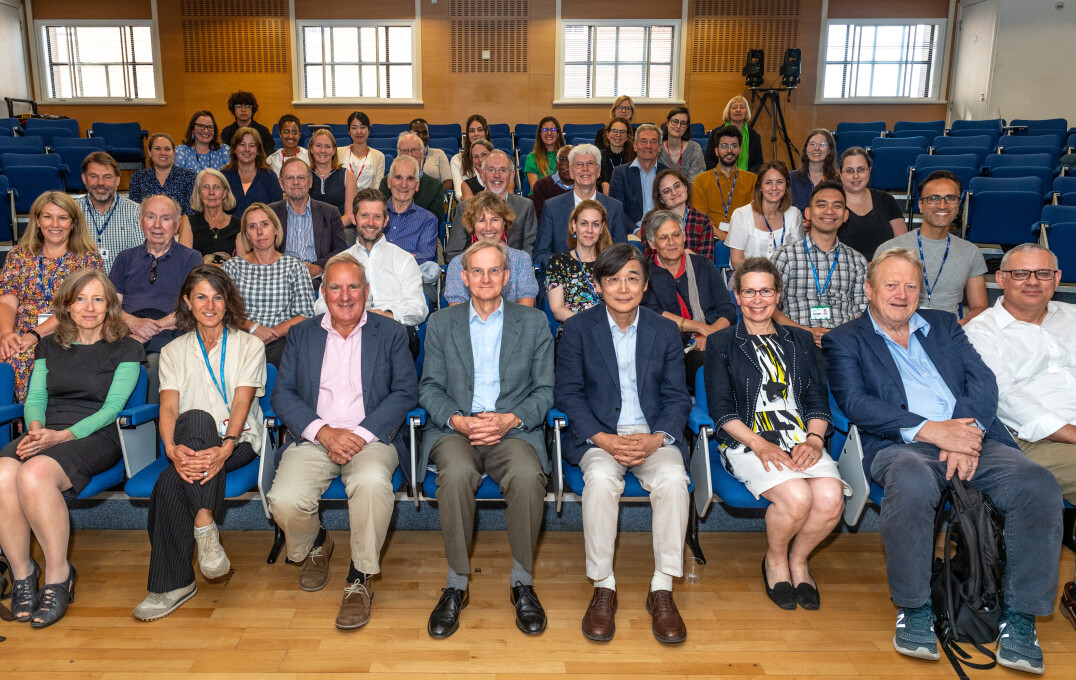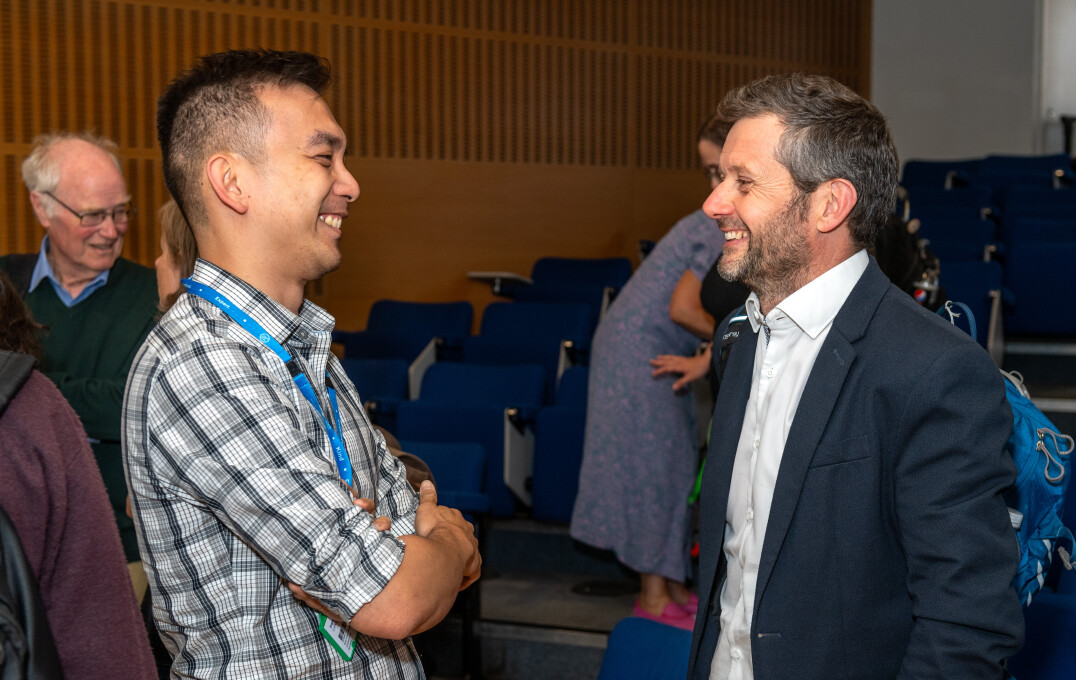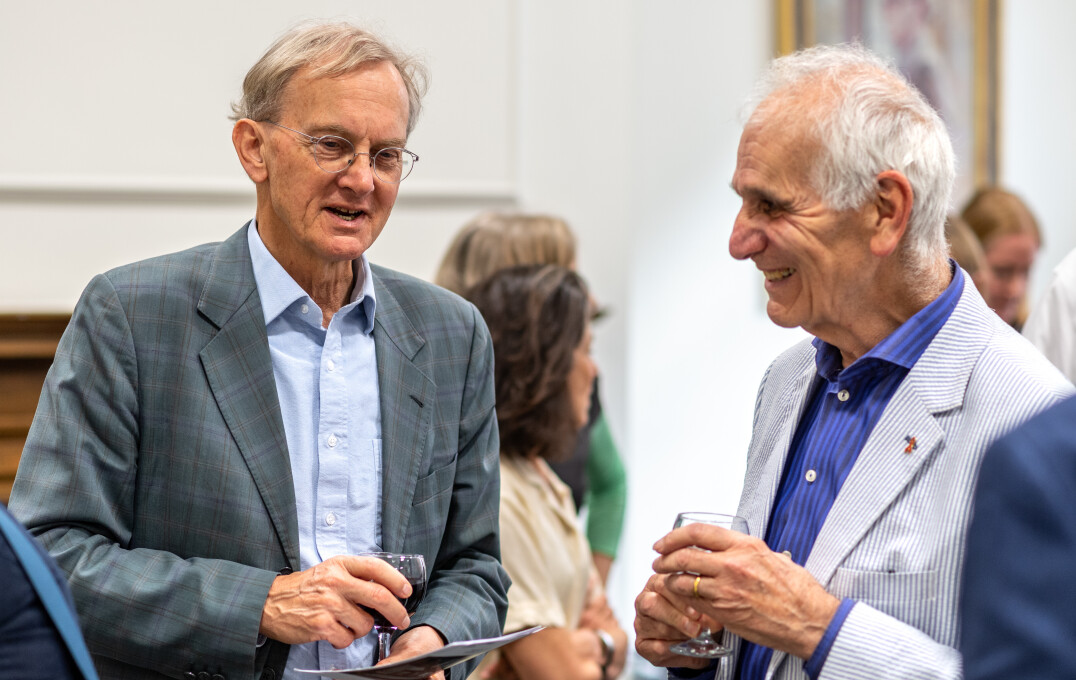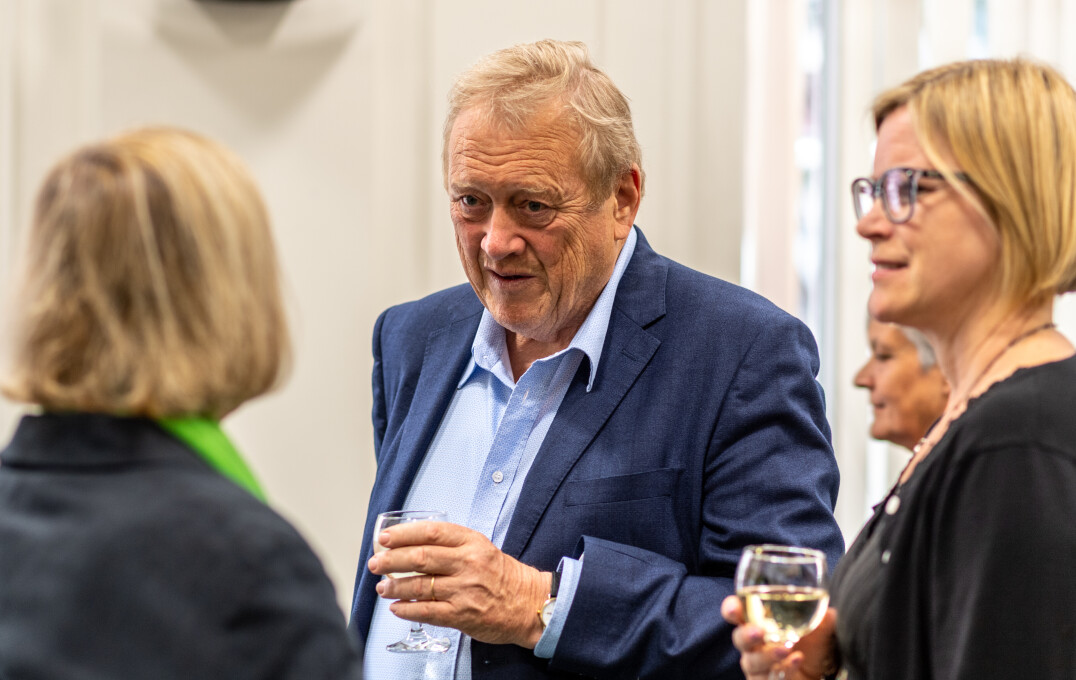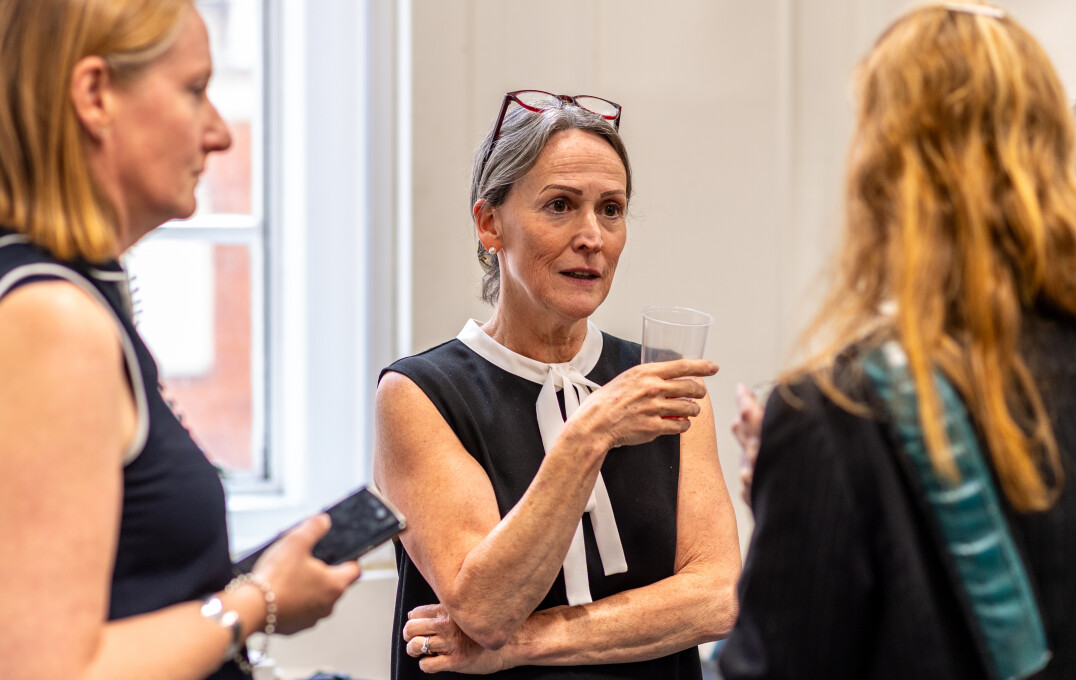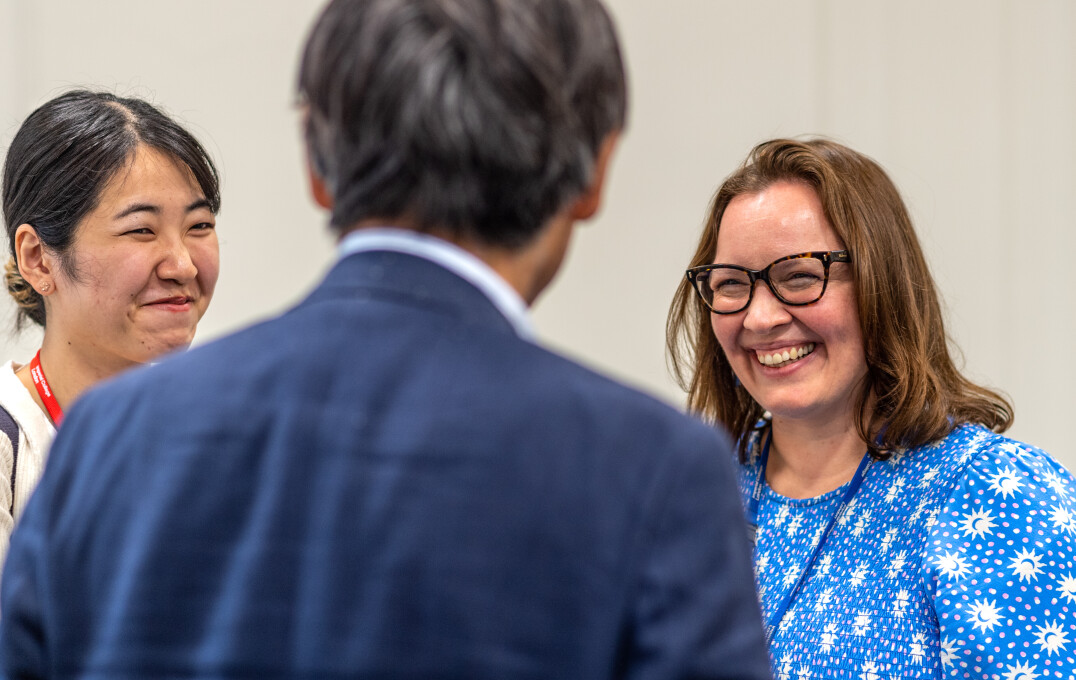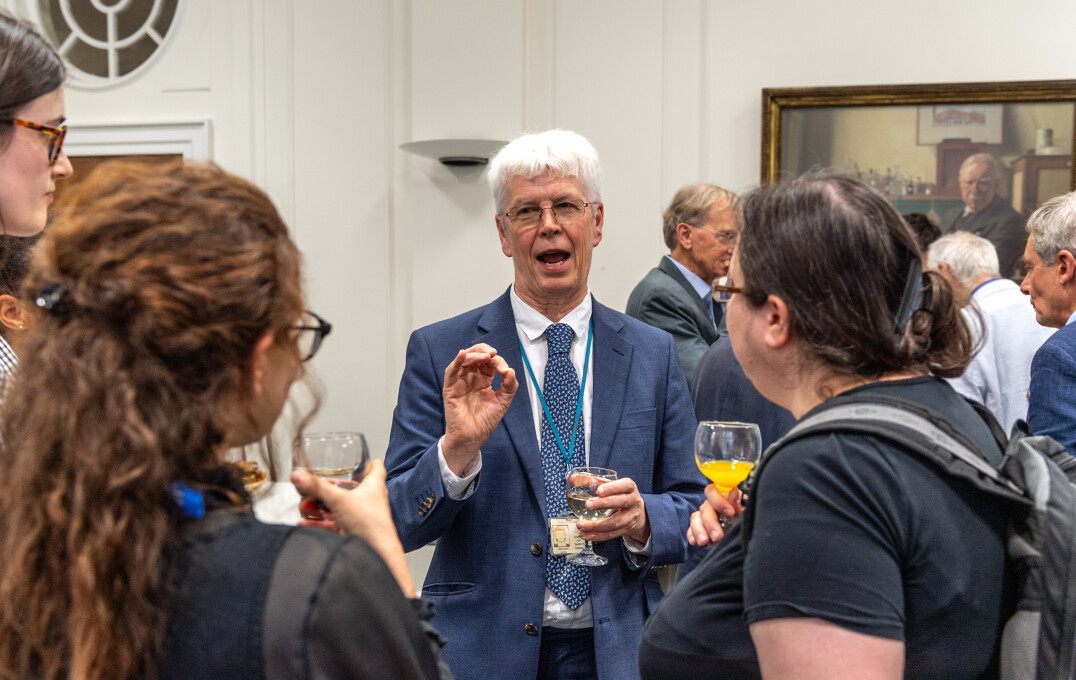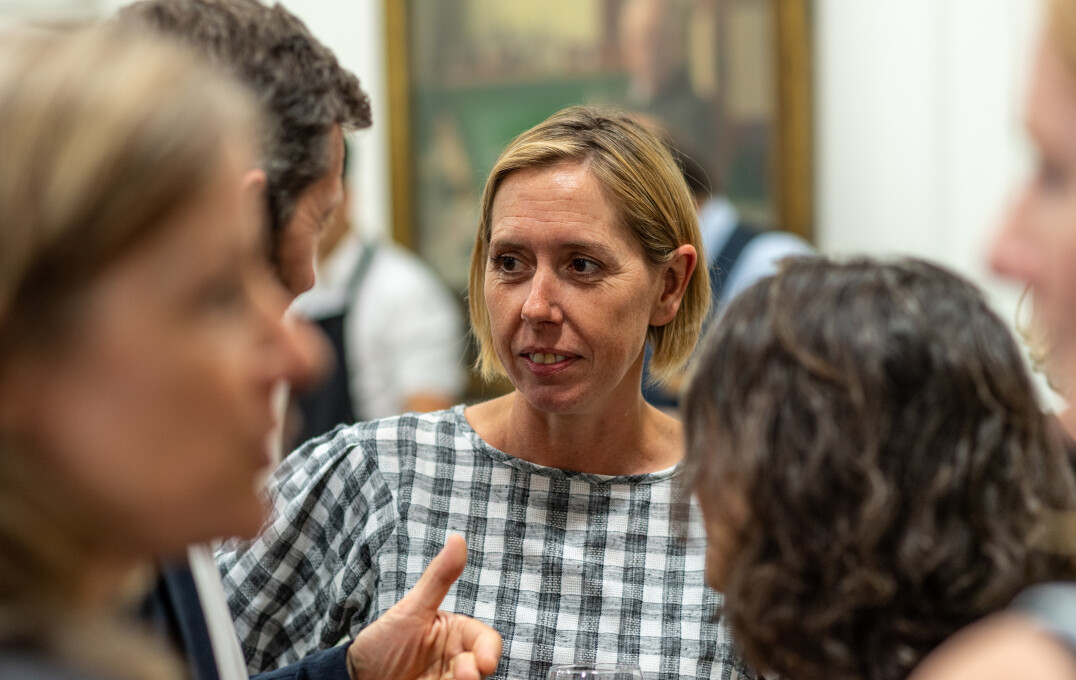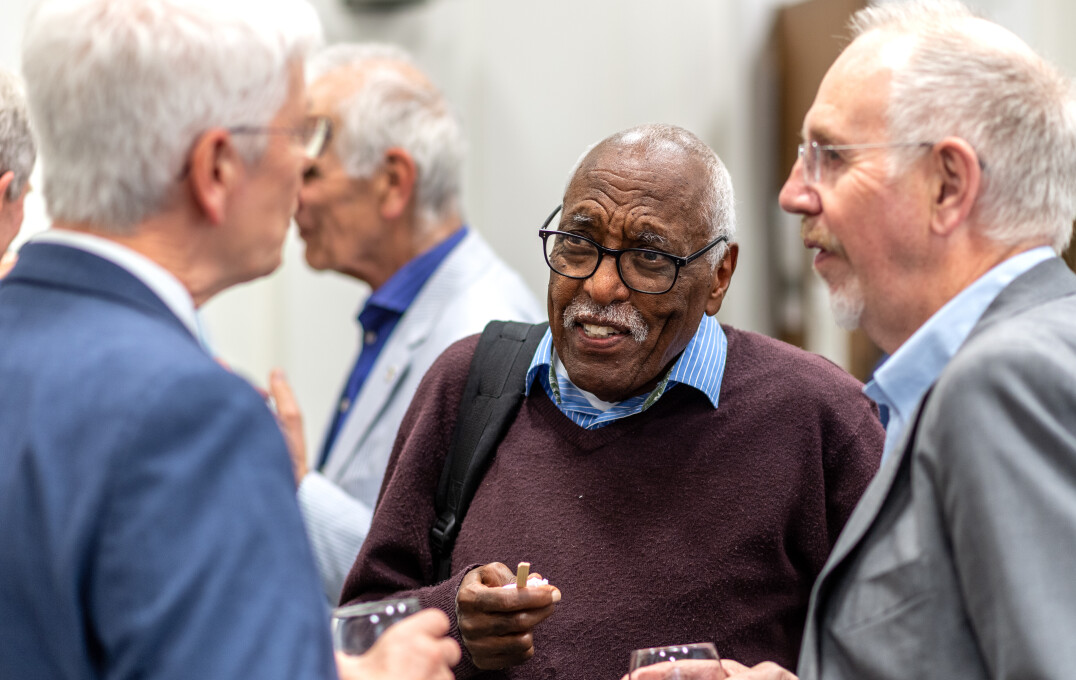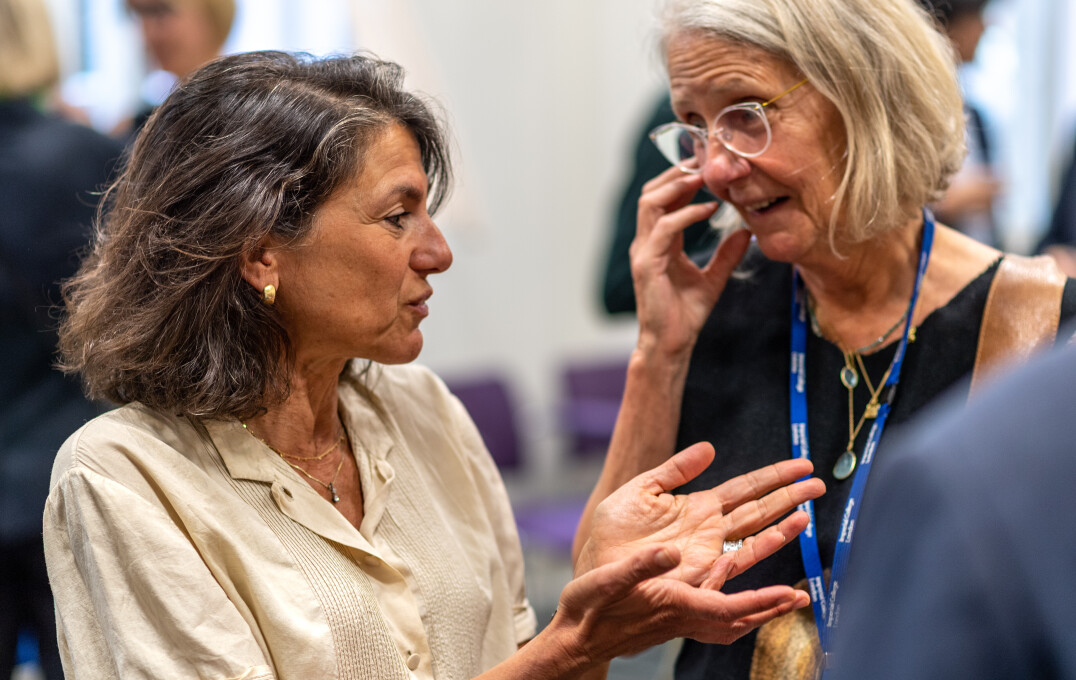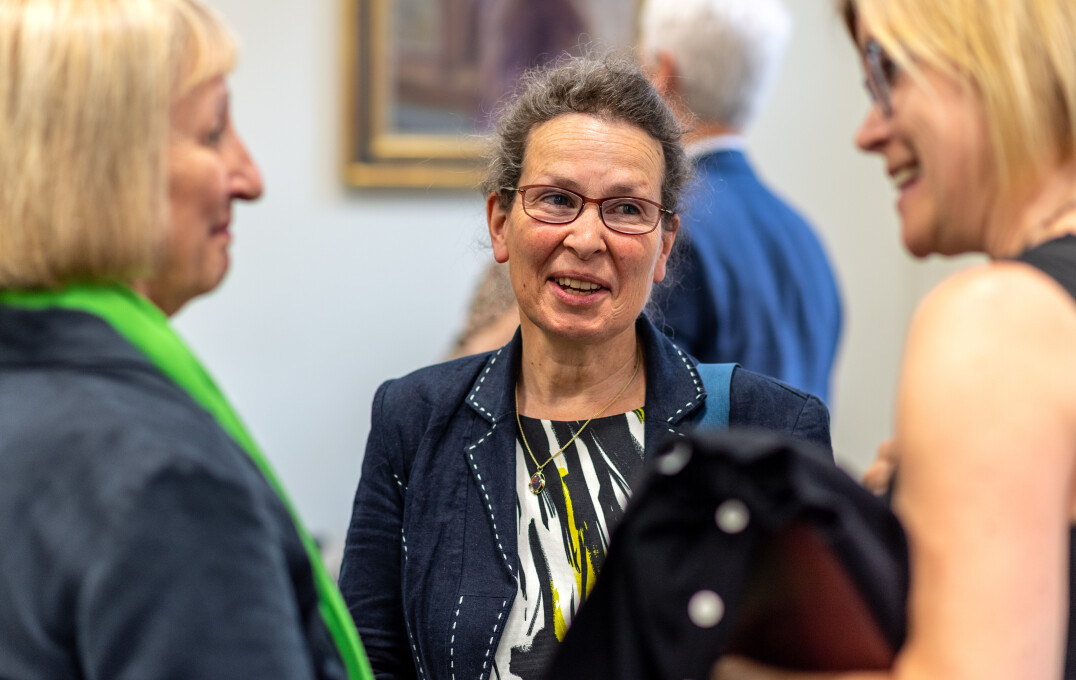Retrovirology Symposium: A celebration of 60 years of friendship & collaboration
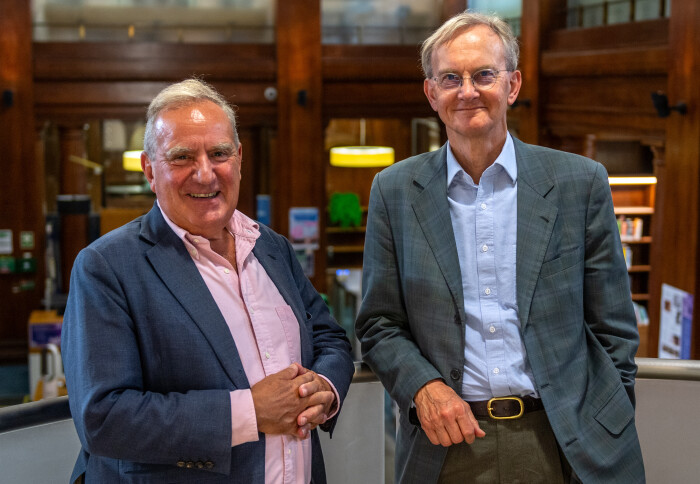
Credit: Fergus Burnett
The day celebrated the semi-retirement of Professor Jonathan Weber and Professor Charles Bangham, who first met at junior school 60 years ago.
Around 60 people attended the Retrovirology Symposium on 6 July to hear talks about HIV (Human Immunodeficiency Virus) and HTLV-1 by academics from across the globe.
The day celebrated the semi-retirement of Professor Jonathan Weber (Outgoing Dean, Faculty of Medicine) and Professor Charles Bangham (Co-Director, Institute of Infection) who first met at junior school 60 years ago. Professor Weber recalled the teacher once asking, “What do you want to do when you grow up?”, to which, amongst the typical “train driver” and “aeroplane pilot” responses, came Professor Bangham’s response: “I want to do medical research.” No doubt, this was inspired by his strong multigenerational association with the Medical Research Council. Perhaps it also foreshadowed the future because both Professor Weber and Professor Bangham went on to study at Cambridge University before going into different research careers. After following separate paths for some 12 years, they converged again when they discovered they were working on the same virus (HTLV-1), leading to a collaboration that was to last decades.
The workshop was a chance to look back at this remarkable journey and the discoveries it spawned, brought to life by colleagues, students, and mentees who shared their anecdotes and their own contributions to the retrovirology field. Talks covered discoveries in retroviral research: From how HTLV-1 is managed and outcomes are predicted in the clinic to new molecular insights into HIV-1 infection.
A look at HTLV-1 research
A series of talks covered the discoveries in HTLV-1 research, from how it is managed and how outcomes are predicted in the clinic to the molecular mechanisms of viral integration into the host genome. HTLV-1 is a global problem with over 10 million infections concentrated in certain tropical and subtropical regions worldwide. While 90% of carriers of this blood-borne retroviral infection are asymptomatic, in other carriers it can cause Adult T-cell Leukaemia (ATL) and inflammatory diseases, including HTLV-1-associated myelopathy (HAM; affecting the spinal cord). ATL, which develops in 5% of carriers, is a devastating disease with a median overall survival of <1 year, while HAM is a relentlessly progressive disease in which most patients experience extremely poor quality of life and ultimately need a wheelchair.
From the clinical perspective, Dr Lucy Cook (Consultant Haematologist at Imperial College Healthcare NHS Trust) and Professor Graham Taylor (Department of Infectious Disease) described how a high proviral load is found both in patients who go on to develop ATL and those who develop HAM, how both diseases are associated with T-cell activation, and how clinical trials are under way to test drugs such as mogamulizumab for the treatment of both ATL and HAM and for the prevention of ATL in high-risk patients. Dr Cook described how a person’s risk of developing ATL can be measured by a flow cytometry-based scoring system based on the ‘Oligoclonality index’, where polyclonality in the peripheral blood suggests likeliness to remain asymptomatic whereas an abundant single clone indicates a high risk of ATL.
Dr Goedele Maertens (Department of Infectious Disease) described the host enzyme phosphatase PP2A, in which the B56 subunit stimulates the integration of HTLV-1 into the host genome. She presented data investigating whether drugs that inhibit integration can prevent transmission of the virus. Professor Masao Matsuoka (Kumamoto University, Japan) explored the evolution and host factors that enable HTLV-1, but not HTLV-2 and simian T-cell leukaemia virus (STLV-1), to cause disease. Finally, Dr Aileen Rowan (Department of Infectious Disease), explained how access to Imperial’s unique HTLV-1 biobank of 400 patients allowed the team to explore the evolution of clonality and temporal onset of driver mutations in HTLV-1-infected cells of individual patients over 10 years, as they went from asymptomatic to cancer diagnosis.
Molecular and clinical understanding of HIV
HIV-1 - the other common pathogenic human retrovirus - was the other focus of the day: the talks covered research ranging from new molecular insights to the prevention of disease.
Professor Peter Cherepanov (Francis Crick Institute) presented work that solved the structure of the HIV-1 integrase molecule, which is being used to inform the identification of small molecule inhibitors and helps to explain resistance. Professor Clare Jolly (UCL) reported new evidence supporting the notion that cell-to-cell transmission of HIV is driven by the reprogramming of the target cell to become more permissive to infection. Professor Paul Bieniasz (Rockefeller University and Howard Hughes Medical Institute) followed by describing mechanisms used by retroviruses to evade host defences – in particular the exciting recent discovery that HIV-1 has evolved to survive in the host by escaping detection by a protein called ZAP, which binds RNA sequences that are rich in CpG dinucleotides (CpG).
On the prevention and treatment of HIV-1 infection, Professor Sheena McCormack (UCL) presented new evidence to support the optimised use of pre-exposure prophylaxis (PrEP) use, while Professor Sarah Fidler (Department of Infectious Disease) and Professor John Frater (University of Oxford), explored the new immune-based approaches being explored to ‘cure’ HIV, including early intervention with ART (as supported by the results of the SPARTAC trial), immune modulation with broadly neutralizing antibodies, and gene therapy.
Impact on a field
Beyond the major contributions to human retrovirology, the recurring theme of the day was the gratitude and appreciation for the scientific and personal impacts that Professor Weber and Professor Bangham had made in the lives of the assembled experts. It was a day of memories, thanks, inspiration, and respect that summarized a friendship that started 60 years ago. “It’s been great fun ever since,” said Professor Bangham, and Professor Weber said, “It’s been a joy to have Charles as a colleague here for 28 years.”
Slideshow of attendees - Photos by Fergus Burnett
Article text (excluding photos or graphics) © Imperial College London.
Photos and graphics subject to third party copyright used with permission or © Imperial College London.
Reporter
Melanie Bradnam
Department of Brain Sciences
Natasha Khaleeq
Institute of Infection
